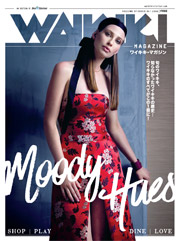The Legacy of Lalani Village
Remembering a visitor attraction located in Waikiki in the 1930s that celebrated Hawaiian language, culture and way of life.
On a pristine parcel of land in Waikiki, flanked by Kalakaua and Paoakalani Avenues, once stood Lalani Hawaiian Village, a wondrous place for visitors to experience a Hawai’i of the past. Created with the vision of master ‘ukulele builder George Mossman and his family, the village was an authentic representation of historic Hawai’i and was created to perpetuate the unique culture within these islands. Mossman explained, “The old people with the knowledge of the old Hawaiian customs are rapidly dying; and their knowledge is dying with them. Our task now is to preserve everything we can.”
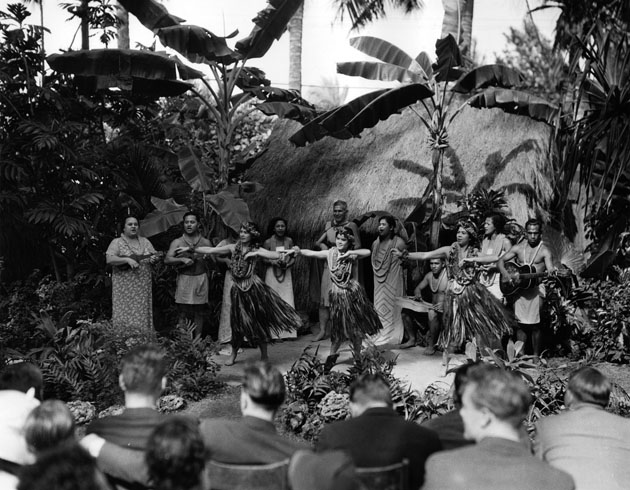
Hula show at the Lalani Hawaiian Village, Waikiki, O’ahu, Hawai’i. Standing in center, rear: George P. Mossman (owner) hula dancers: Pualani Mossman, Leilani Mossman, Piilani Mossman. Photo: N.R. Farbman, Bishop Museum
Lalani Village was designed to look and feel like an ancient Hawaiian community, one that had existed before western contact and long before the development of Waikiki as a place for tourists. George and Emma Mossman had such visitors in mind when they created Lalani Village. They wanted to be certain that people would see and remember how Hawaiians once lived and thrived. And they wanted Native Hawaiians to remember their roots, during a time when Americanism was taking a firm hold in the islands.
Built in 1932, on land leased to Mossman, Lalani Village was a celebration of Hawaiian language and culture. Next to the Mossman home were seven traditional grass huts, built by a master hale craftsman.
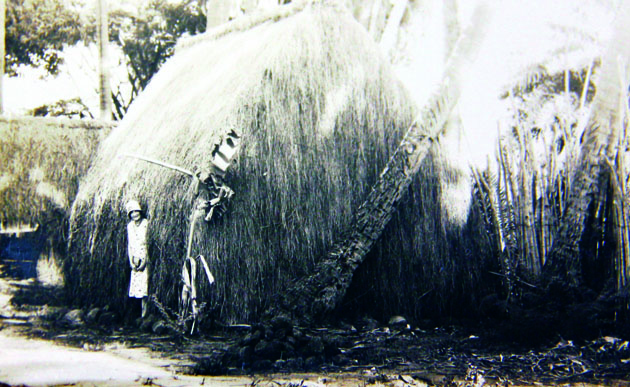
Traditional grass huts were built by a master hale craftsman.
In front of these dwellings, experts made lei, carved wa’a (canoes), and pounded kapa and poi. Others tended the kalo that grew in the property’s lo’i. A heiau, an essential part of any pre-contact Hawaiian community, was also included in the village’s layout.
A champion of Hawaiian ways, and known for his personal charisma, Mossman had previously established a school in 1928 not far from what would become Lalani Village. Students were drawn to his school to study the Hawaiian language, including songs and chants. This commitment to teaching the ancient ways then extended to the village.
Prominent kumu hula (hula teachers) and hula performers from throughout the islands came to live at the village to not only demonstrate their artistry but also to teach their crafts to others. Even the court chanter for the late King Kalakaua, Kuluwaimaka, would become a resident of the village for a time and would recall the words of the Kumulipo, the ancient Hawaiian creation chant, for the sake of instruction and creating connection to a time passed.
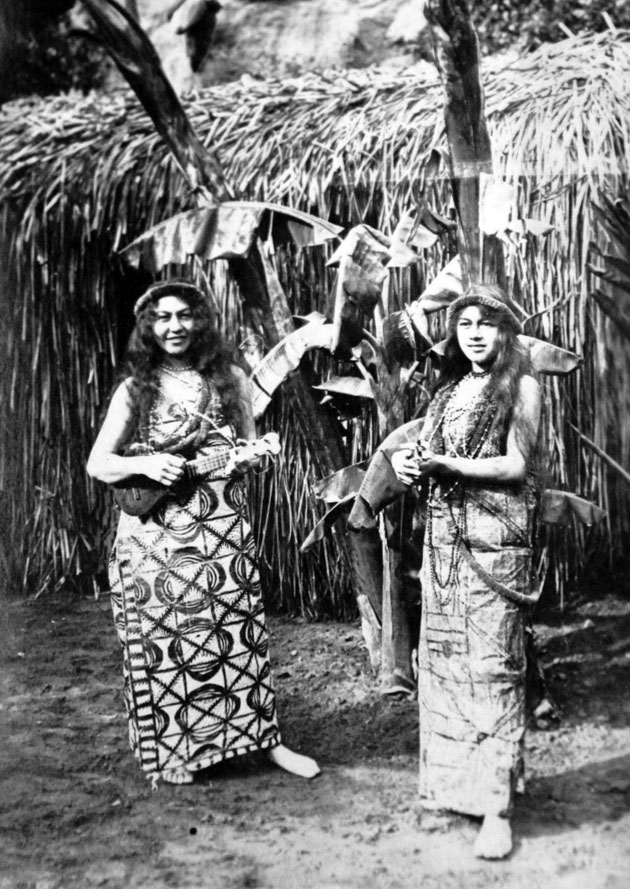
Photos: Courtesy Hawai’i State Archives
The Waikiki of the ’30s, ’40s, and ’50s was the quintessential “Tiki Era.” The world had come to know and love the mystique associated with the Hawaiian Islands and had begun incorporating it into westernized versions of Hawaiian music and hula, even adding such song and dance to Hollywood movies.
Eldest daughter Pualani even starred in the first color movie produced in Hawai’i, Song of the Islands, a short film meant to promote tourism. While some of the performances at Lalani Village did incorporate westernized elements, the Mossmans were intent on maintaining traditional presentation of island culture. Promotion of Lalani Village promised, “In this idyllic setting, you will thrill to the romance of Island yesterdays.”
Key is the fact that Mossman created Lalani Village at a time when Hawaiianness was discouraged. Hawai’i was a U.S. Territory, and many island residents were concerned more with modern American living versus traditional Hawaiian practices. Hawaiian historian, George Kanahele, recalled, “[Mossman’s] was a voice in the wilderness that could not be heard above the din of oaths of allegiance to America. For the 1930s and ’40s was a period of red-white-and-blue Americanization. Everyone tried to be good Americans, which meant that you best submerge any feelings of being nonor un-American.”
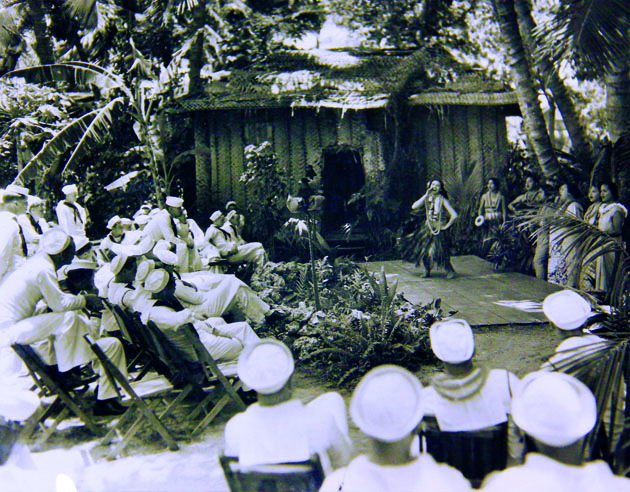
Pualani Mossman dancing the hula at Lalani Village, Waikiki. CA. 1935.
Mossman eventually purchased the land under which Lalani Village stood, but decreased tourism caused him to close the cultural attraction down for good in the early ’50s. Mossman had detailed plans for a redesign of Lalani Village. However, in 1955, before his dream could be rekindled, Mossman passed away at 64 and the land was sold. Today, the Waikiki Beach Marriott hotel rises up from where the Lalani Hawaiian Village once stood.
A true Hawaiian “renaissance” would happen in the 1970s, one that has grown into a solid reestablishment of Hawaiian language and culture throughout these islands. Some might say that Mossman was decades ahead of his time.
GLOSSARY OF TERMS
hale – house
heiau – in ancient Hawaiian times, a temple, or place of worship
kalo – taro, its root is used to produce poi, its leaves can also be eaten
kapa – a cloth made from the bark of trees
kumu hula – hula teacher
Kumulipo – the creation chant of the Hawaiian people
lei – a garland, usually made of flowers, but other materials such as leaves, vines and shells can be used
lo’i – irrigated terraces for growing kalo
poi – a starchy food, produced by pounding the root of the kalo plant. It is a staple of the ancient Hawaiian diet.
‘ukulele – a four-stringed instrument, like a miniature guitar, introduced to Hawai’i by the Portuguese. It has become a staple of modern Hawaiian music.
wa’a canoe



